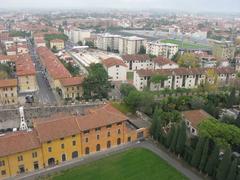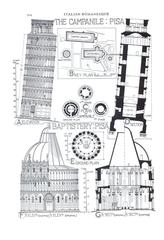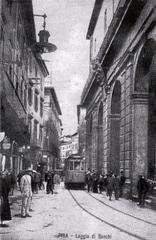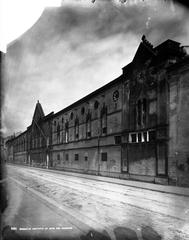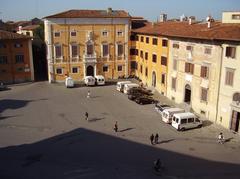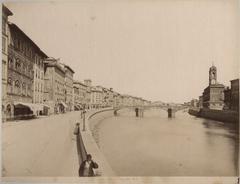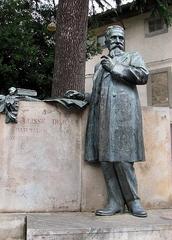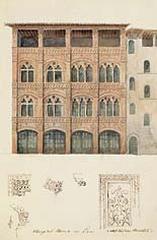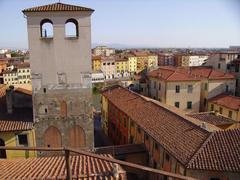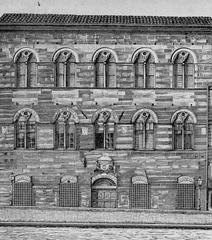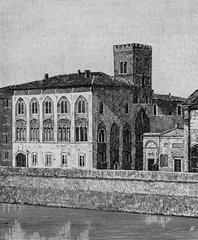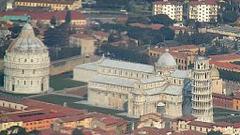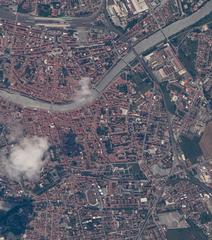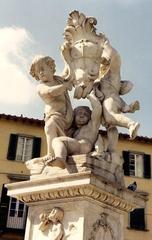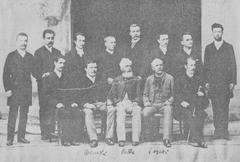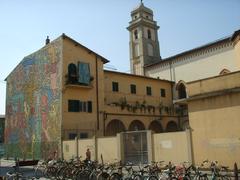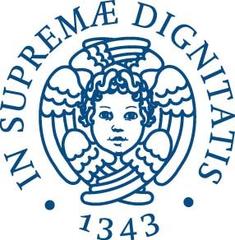Largo del Parlascio, Pisa: Visitor’s Guide
Date: 19/07/2024
Why Visit Largo del Parlascio?
Largo del Parlascio, situated in the historic city of Pisa, Italy, is an enthralling destination that seamlessly weaves together the threads of ancient, medieval, and Renaissance history. This guide provides a comprehensive overview of Largo del Parlascio, focusing on its rich historical background, visitor information, and practical tips to ensure an unforgettable experience.
The site, originally part of the Roman city of Pisae, has been a vital location for trade, military operations, and public gatherings since the 2nd century BCE (source). During the medieval period, Pisa’s prominence as a powerful maritime republic saw Largo del Parlascio become a focal point for civic and social activities, with important buildings and institutions such as churches and guild halls being established in the area (source). The Renaissance period brought further architectural and cultural developments, including the construction of the Palazzo del Parlascio, which featured intricate frescoes and ornate facades (source). Today, Largo del Parlascio stands as a testament to Pisa’s rich cultural heritage, attracting visitors from around the world who come to explore its historical significance and architectural beauty.
What You’ll Find in This Guide
- Introduction
- History of Largo del Parlascio, Pisa, Italy
- Ancient Origins
- Medieval Significance
- Renaissance and Architectural Developments
- Modern Era and Preservation Efforts
- Archaeological Discoveries
- Visitor Experience
- Guided Tours
- Local Cuisine
- Cultural Events
- Visitor Information
- Tickets
- Visiting Hours
- Accessibility
- Travel Tips
- FAQ
- What are the visiting hours for Largo del Parlascio?
- Do I need to purchase tickets to visit Largo del Parlascio?
- Are there any nearby attractions?
- Is Largo del Parlascio accessible to visitors with disabilities?
- Conclusion
Discovering Largo del Parlascio - History, Tickets, Visiting Hours & More
Introduction
Largo del Parlascio is a captivating blend of ancient, medieval, and Renaissance influences. This guide will take you through its rich history, visitor information, and tips for an unforgettable experience at this historical gem.
History of Largo del Parlascio, Pisa, Italy
Ancient Origins
Largo del Parlascio is steeped in rich history dating back to ancient times. The area was originally part of the Roman city of Pisae, which was established as a colony in the 2nd century BCE. The strategic location of Pisae along the Arno River made it an important hub for trade and military operations. Archaeological evidence suggests that the Largo del Parlascio area was used for various public and administrative purposes during the Roman era. The remnants of Roman structures, including roads and buildings, have been discovered in the vicinity, indicating the area’s significance in antiquity (source).
Medieval Significance
During the medieval period, Pisa rose to prominence as a powerful maritime republic. The city’s wealth and influence grew, and Largo del Parlascio became a focal point for civic and social activities. The name is believed to be derived from the Latin word “Parlascivum,” indicating that the area may have been a place for public gatherings and discussions. Historical records from the 11th and 12th centuries mention the presence of important buildings and institutions around Largo del Parlascio, including churches and guild halls. The area was also a center for trade, with markets and shops catering to the needs of the local population and visitors (source).
Renaissance and Architectural Developments
The Renaissance period brought significant architectural and cultural developments to Pisa, and Largo del Parlascio was no exception. The area saw the construction of several notable buildings, reflecting the artistic and architectural styles of the time. One of the most prominent structures was the Palazzo del Parlascio, a grand building that served as a residence for prominent Pisan families. The palazzo featured intricate frescoes, elegant arches, and ornate facades, showcasing the wealth and sophistication of its inhabitants. Additionally, the area around Largo del Parlascio was adorned with beautiful gardens and public spaces, making it a popular destination for leisure and socializing (source).
Modern Era and Preservation Efforts
In the modern era, Largo del Parlascio has continued to be an important cultural and historical landmark in Pisa. The area has undergone various preservation and restoration efforts to maintain its historical integrity and architectural beauty. In the early 20th century, several buildings in the area were restored to their former glory, with careful attention to historical accuracy. These efforts were aimed at preserving the unique character of Largo del Parlascio while making it accessible to the public. Today, the area is a popular destination for tourists and locals alike, offering a glimpse into Pisa’s rich history and cultural heritage (source).
Archaeological Discoveries
Recent archaeological excavations in Largo del Parlascio have uncovered fascinating insights into the area’s past. In 2019, a team of archaeologists discovered the remains of a Roman amphitheater beneath the modern-day square. The amphitheater, dating back to the 1st century CE, is believed to have been a significant venue for public entertainment, including gladiatorial games and theatrical performances. The discovery has shed light on the cultural and social life of ancient Pisa, highlighting the city’s importance as a center of Roman civilization. The excavation site has been partially opened to the public, allowing visitors to explore the ancient ruins and learn about the history of Largo del Parlascio (source).
Visitor Experience
Guided Tours
Largo del Parlascio is a vibrant and bustling area that attracts visitors from around the world. Guided tours are available, providing in-depth information about the history and significance of Largo del Parlascio. These tours offer a comprehensive overview of the site’s rich history and architectural beauty. Check out Viator or GetYourGuide for tour options and bookings.
Local Cuisine
The square is surrounded by charming cafes, restaurants, and shops, offering a delightful experience for tourists. Visitors can enjoy the local cuisine, which features a blend of traditional Tuscan dishes and modern culinary innovations. Notable dining options include Osteria di Culegna and La Taverna di Emma.
Cultural Events
The area hosts various cultural events and festivals throughout the year, celebrating Pisa’s rich heritage and traditions. These events provide a unique opportunity to immerse oneself in the local culture and enjoy the vibrant atmosphere of Largo del Parlascio. For the latest event information, check the Pisa Tourism Website.
Visitor Information
- Tickets: Entrance to Largo del Parlascio is free. However, guided tours and special exhibitions may require tickets, which can be purchased online or at the site.
- Visiting Hours: Largo del Parlascio is open to the public 24 hours a day. Guided tours and special exhibitions have specific hours, typically from 10 AM to 6 PM.
- Accessibility: The area is accessible to visitors with disabilities, with ramps and pathways designed for easy navigation.
- Travel Tips: It is recommended to visit during the early morning or late afternoon to avoid the crowds. Comfortable walking shoes are advised, as the area has cobblestone streets and uneven surfaces.
FAQ
Q: What are the visiting hours for Largo del Parlascio? A: Largo del Parlascio is open 24 hours a day. However, guided tours and special exhibitions typically operate from 10 AM to 6 PM.
Q: Do I need to purchase tickets to visit Largo del Parlascio? A: Entrance to Largo del Parlascio is free. Tickets are required for guided tours and special exhibitions.
Q: Are there any nearby attractions? A: Yes, the Leaning Tower of Pisa, Pisa Cathedral, and Piazza dei Miracoli are all within walking distance of Largo del Parlascio.
Q: Is Largo del Parlascio accessible to visitors with disabilities? A: Yes, the area is designed to be accessible with ramps and pathways for easy navigation.
Conclusion
Largo del Parlascio is a historical gem in the heart of Pisa, offering a unique blend of ancient, medieval, and Renaissance influences. Its rich history, architectural beauty, and cultural significance make it a must-visit destination for anyone exploring the city of Pisa. Plan your visit, immerse yourself in the heritage, and experience the captivating charm of Largo del Parlascio.
For more updates and travel tips, follow us on social media or download our mobile app Audiala.
Key Takeaways
Largo del Parlascio is a historical treasure offering visitors a unique opportunity to explore Pisa’s rich cultural heritage. From its ancient Roman origins to its medieval prominence and Renaissance architectural developments, Largo del Parlascio provides a captivating glimpse into the past. Recent archaeological discoveries, such as the remains of a Roman amphitheater, further enhance the site’s historical significance (source). Visitors can enjoy a variety of experiences, including guided tours, local cuisine, and cultural events, making it a vibrant destination for both tourists and locals. With its free entrance, accessibility, and nearby attractions like the Leaning Tower of Pisa and Piazza dei Miracoli, Largo del Parlascio is a must-visit location in Pisa. By planning your visit and following the provided tips, you can ensure a memorable and enjoyable experience at this remarkable historical site.
